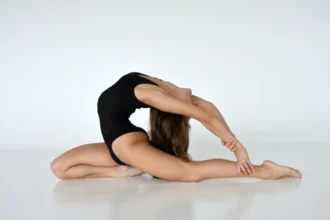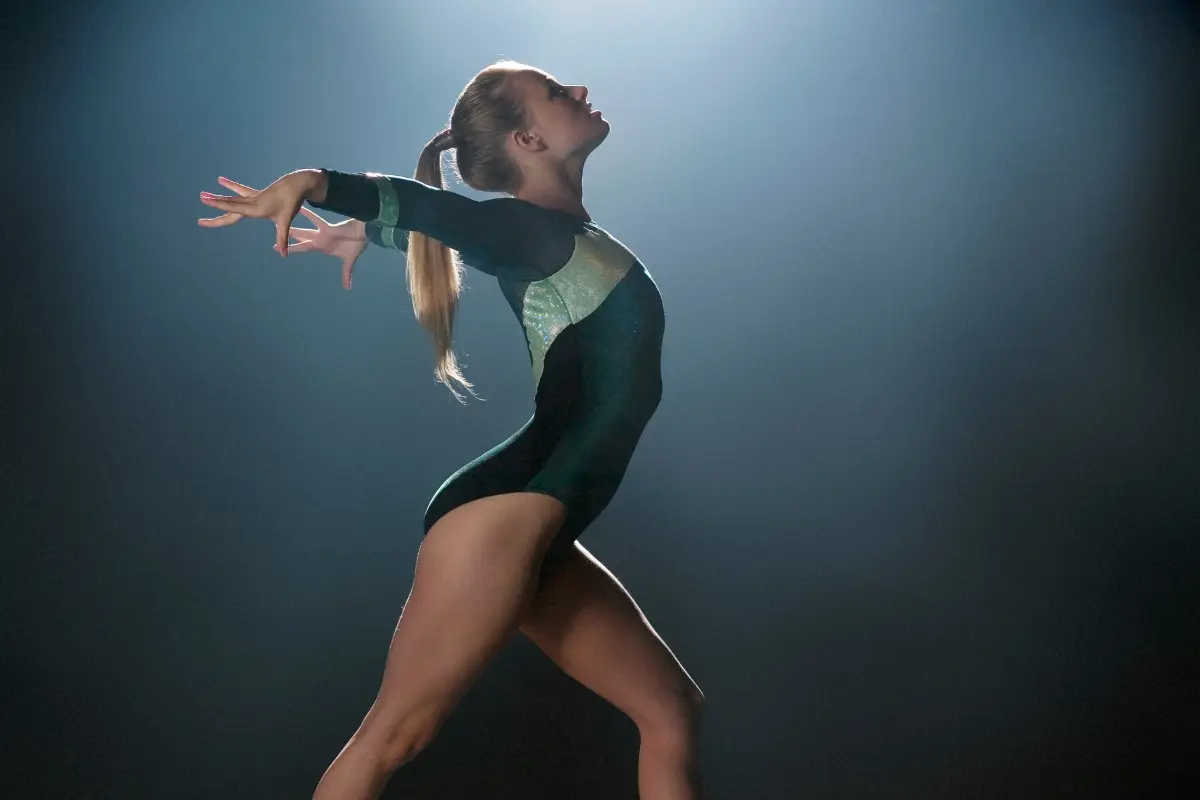Gymnastics routines are performed on various apparatuses, each with its own unique time requirements. Whether it’s on the floor, balance beam, uneven bars, or vault, the duration of a gymnastics routine depends on the level of competition, age group, and the specific rules governing the event.
1. Floor Exercise Routine Duration
The floor exercise is one of the most exciting and visually dynamic gymnastics routines. In a floor routine, athletes perform a series of acrobatic skills, dance elements, and tumbling passes on a 12×12 meter mat. The length of a floor exercise routine is strictly regulated and varies depending on the competition level and age group.
Senior Elite (Women’s Gymnastics):
- The floor routine duration for senior elite gymnasts, such as those competing in the Olympics or World Championships, is generally between 1 minute and 30 seconds to 1 minute and 40 seconds.
Junior Elite (Women’s Gymnastics):
- Junior gymnasts, typically those aged 12–15, have a routine duration that falls within a similar range, between 1 minute 20 seconds and 1 minute 40 seconds.
Compulsory and Lower Levels (Women’s Gymnastics):
- At the lower levels, including the compulsory levels and Xcel program, the routine duration can vary. However, it typically ranges from 1 minute 15 seconds to 1 minute 30 seconds.
Men’s Gymnastics:
- In men’s gymnastics, the floor routine is typically around 1 minute in length, although it may be slightly shorter or longer depending on the level of competition and the specific event.
2. Balance Beam Routine Duration
The balance beam is one of the most technical and delicate apparatuses in gymnastics, requiring incredible balance, flexibility, and poise. The time spent performing on the beam is not as long as other events, primarily due to the risk and complexity of the apparatus.
Elite Level (Women’s Gymnastics):
- For elite gymnasts, the balance beam routine typically lasts about 1 minute and 30 seconds to 1 minute and 45 seconds. The gymnast performs a series of acrobatic skills, such as leaps, jumps, turns, and dismounts, with choreography to demonstrate grace and control.
Junior Elite (Women’s Gymnastics):
- The beam routine for junior gymnasts is typically similar in length to the senior elites, around 1 minute 15 seconds to 1 minute 30 seconds.
Compulsory and Lower Levels (Women’s Gymnastics):
- At the lower levels, the balance beam routines are shorter and more basic, generally lasting between 1 minute and 1 minute 15 seconds.
3. Uneven Bars Routine Duration
The uneven bars involve a series of swings, releases, transitions, and dismounts, all performed on two horizontal bars set at different heights. This event requires great upper body strength, timing, and precision.
Elite Level (Women’s Gymnastics):
- At the elite level, gymnasts spend around 1 minute and 10 seconds to 1 minute and 30 seconds performing their routines on the uneven bars. The routine is fast-paced, focusing on fluid movements and complex elements.
Junior Elite (Women’s Gymnastics):
- Junior gymnasts usually perform on the uneven bars for a duration ranging from 1 minute to 1 minute 20 seconds.
Compulsory and Lower Levels (Women’s Gymnastics):
- At lower levels, routines are often simpler and may range from 40 seconds to 1 minute in length, depending on the complexity of the skills performed.
4. Vault Routine Duration
The vault is an explosive event that requires speed, power, and precision. Unlike other events where gymnasts perform for an extended period, the vault routine is much shorter. The focus is on the gymnast’s sprint down the runway, the vaulting phase, and the landing.
Elite Level (Women’s Gymnastics):
- The total duration for the vault is relatively brief, typically 20 to 30 seconds. This includes the run-up, the vault, and the dismount. However, the vault performance itself is often over in a matter of seconds due to the fast-paced nature of the event.
Junior Elite (Women’s Gymnastics):
- Junior gymnasts also perform a similarly short vault routine, ranging from 20 to 30 seconds. The execution time for junior athletes is closely monitored for safety and performance standards.
Compulsory and Lower Levels (Women’s Gymnastics):
- Vault routines at the lower levels are even shorter, typically around 15 to 20 seconds.
5. Men’s Gymnastics Routine Duration
For men, the event durations are slightly different due to the number of apparatuses and the style of performance. The routines tend to be less dance-intensive but involve more strength-based elements. Here’s a breakdown for each apparatus:
- Floor Exercise: Similar to women’s gymnastics, men’s floor routines last about 1 minute.
- Pommel Horse: The pommel horse routine is typically 1 minute to 1 minute and 10 seconds.
- Rings: The routine on the rings is around 1 minute to 1 minute and 10 seconds.
- Vault: As with women, the vault performance lasts 15 to 30 seconds.
- Parallel Bars: Routines generally take 1 minute.
- High Bar: High bar routines are usually around 1 minute to 1 minute and 10 seconds.
Warm-Up and Rest Time
Before and between routines, gymnasts are given warm-up time and rest periods. These periods are essential for ensuring the gymnast is physically prepared and mentally focused. Warm-up times are usually about 20-30 minutes, depending on the competition’s schedule. However, gymnasts are often allowed a few minutes to familiarize themselves with the apparatus just before they perform their routine.
For events that involve multiple apparatuses, such as the all-around competition, there is typically a break between routines to allow the gymnasts time to rest and prepare.
Timing Rules and Penalties
Gymnasts are generally given a small window of time to complete their routine. For floor routines, if a gymnast exceeds the time limit, they can face deductions. This is usually not a common problem for most gymnasts, as they are trained to complete their routine within the allotted time.
Similarly, for beam and bars, if a gymnast takes too long to begin or finish their routine (usually due to hesitation), this may lead to a slight deduction for composition.
How Long Is a Rhythmic Gymnastics Routine?
In rhythmic gymnastics, the duration of routines is strictly regulated to ensure that athletes showcase their skills within a defined time frame while maintaining the artistic and technical integrity of their performance.
Unlike artistic gymnastics, where routines vary by apparatus, rhythmic gymnastics routines focus on the athlete’s performance with a specific apparatus, often accompanied by music and choreography.
1. Individual Rhythmic Gymnastics Routines
In individual rhythmic gymnastics, athletes perform routines with one of the following apparatuses: rope, hoop, ball, clubs, or ribbon. The routine consists of intricate movements, which blend dance and gymnastic elements. The duration of these routines is as follows:
Senior Level:
- The routine time for senior individual gymnasts is generally between 1 minute 15 seconds and 1 minute 30 seconds. This time frame applies to the five apparatuses used in the sport. Each routine must feature a combination of acrobatic elements, leaps, turns, flexibility skills, and apparatus handling, all choreographed to the music.
Junior Level:
- For junior athletes (under 18), the routine durations are typically a bit shorter than those for senior athletes. The routines usually last between 1 minute and 1 minute 20 seconds.
2. Group Rhythmic Gymnastics Routines
In group rhythmic gymnastics, teams of gymnasts (usually five) perform routines together, using one or more apparatuses in a coordinated performance. The routines require synchronization, teamwork, and intricate choreography.
Senior Level:
- The duration of group routines for senior gymnasts is generally 2 minutes and 30 seconds. During this time, gymnasts perform with one apparatus or multiple apparatuses, such as two teams using balls or ribbons simultaneously, creating a more dynamic and complex performance.
Junior Level:
- For junior group routines, the performance time is usually 2 minutes to 2 minutes and 15 seconds. The skills and choreography performed at this level are simpler than at the senior level, but the routines still require a high degree of coordination and precision.
Importance of Timing in Rhythmic Gymnastics
Precise timing in rhythmic gymnastics is essential not only to avoid penalties but also to ensure the routine flows smoothly and maintains artistic value.
Gymnasts are judged not only on their technical proficiency but also on how well their movements align with the music. The duration of the routine allows for a balance of creativity, complexity, and athleticism within a brief performance window.
How Long Is a Trampoline Gymnastics Routine?
In Trampoline Gymnastics, the length of a routine depends on the event being performed. Below are the typical durations for each of the major trampoline gymnastics disciplines:
1. Trampoline (Individual Event)
In individual trampoline gymnastics, the gymnast performs a routine consisting of 10 skills. The routine typically lasts:
- Duration: Approximately 1 minute.
Gymnasts must maintain height, control, and form throughout their routine, which includes flips, twists, and jumps. The performance is judged based on the technical difficulty and the precision of each skill.
2. Synchronised Trampoline
In the double mini trampoline event, the gymnast performs two separate sequences: one on the launch pad and another in the landing area. This event is faster-paced compared to individual trampoline.
- Duration: Each routine lasts about 30 seconds per gymnast.
The routine consists of quick, dynamic acrobatic moves, and the athlete is judged on their execution, difficulty, and landings.
3. Double Mini Trampoline
In double mini trampoline, gymnasts perform two sequences: one on a launch pad and the other as they land on the second trampoline. The gymnast performs acrobatic skills during these two phases.
- Duration: Each sequence lasts about 30 seconds per gymnast.
The total routine time can vary slightly depending on the gymnast’s individual performance, but it’s generally quick and fast-paced, focusing on precise landings and acrobatic transitions.
4. Tumbling
Tumbling involves a series of acrobatic skills performed on a long, springy track. Unlike trampoline, the gymnast is moving continuously down the track, performing flips and twists.
- Duration: Each tumbling run lasts about 10 seconds.
The gymnast is judged on the execution and difficulty of the tumbling passes, as well as the form and consistency throughout the run.
These durations are fairly consistent across competitions, though the focus is always on maintaining high-quality performance within the set time limit for each event.





